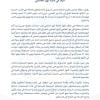
Completion of Search and Rescue Operations...and Transition to the Search and Recovery Phase
Since the earthquake struck northwestern Syria at dawn on Monday, February 6th, until the announcement of the end of search and rescue operations on Friday, February 10th, the disaster has claimed the lives of over 2,166 individuals and left more than 2,950 injured.
Our teams announced yesterday, on Friday, February 10th, that the search and rescue operations in the earthquake-affected areas of northwestern Syria have come to an end. The announcement came five days after the earthquake struck the area at dawn on Monday, February 6th. During the press conference, it was announced that the search and recovery operations will now begin, following the discovery of almost no survivors trapped under the rubble.
The statistics of the victims that The White Helmets responded to in northwestern Syria, since the beginning of the earthquake at 4:17 minutes until the announcement of the end of the search and rescue operations, amounted to more than 2,166 deaths, and more than 2,950 injured in all areas hit by the earthquake in northwestern Syria. Our teams worked tirelessly for 108 hours in over 40 cities, towns, and villages, resulting in the complete destruction of 479 residential buildings and severe destruction of 1,481 others. The search and rescue operations have now been declared over.
Number of Injured and Their Geographical Distribution
Until the last hour of announcing the cessation of search and rescue operations, he total number of death as reported by the The White Helmets teams was more than 2,166, with a significant proportion being women and children. The highest number of deaths was recorded in Jenderes with 513 fatalities, followed by Harem with 360 deaths. The city of Salqin saw 221 deaths, while Armanaz had 155 fatalities and Atarib 150 deaths. The town of Azmarin reported 140 deaths. These figures highlight the devastating impact of the earthquake in northwestern Syria.
Our teams have rescued and assisted a total of 2,950 injured individuals. Sadly, no survivors have been rescued alive from the rubble since Thursday, February 9th. The highest number of injuries was recorded in Jenderes, where 831 civilians were rescued. Salqin saw 258 rescued civilians, while 215 were rescued in Bisnia village and 210 in Harem. The cities of Atarib and Armanaz each had 200 injured individuals, followed by Afrin with 170 rescued individuals.
Cities, Towns and Villages Our Teams Have Responded To
Idlib, Meles, Al-Maland, Hafsarga, Al-Qunya, Al-Yaqoubia, Atmeh, Sarmada, Jandiris, Al-Bab, Azaz, Suran, Killi, Qorqanya, Shill Idleb, Shill Aleppo, Azmarin, Zardana, Atarib, Square Ikbis, Raju, Kebbetah, Dana, Ramadieh, Tarmanin, Kafr Takharim, Salqin, Harim, Sandaf, Sajo, Jarabulus, Rael, Tal al-Karamah, Ihtaimalat, Kafrghan, Ram Hamdan, Armanaz, Afrin, Baskatia, Bettyush, and Darkawush Abu Talha, Hamzia and Taloul.
Destroyed Buildings and Their Geographical Distribution
Jenderes had the highest number of destroyed buildings, with 200 completely destroyed and 500 partially destroyed buildings. Salqin saw 50 completely destroyed buildings and around 300 partially damaged buildings. Armanaz had 30 completely destroyed buildings and 15 partially damaged ones. The majority of these buildings were multi-storey structures with four floors.
The cities of Sarmada, Atarib, Meles, Bisnia, Harem, and Dana also saw severe damage to their residential buildings, with thousands of buildings being damaged and posing a danger to their residents. The earthquake had a widespread and devastating impact on the infrastructure and housing in northwestern Syria.
The Challenges Faced by Our Teams During Rescue Operations
With the onset of the earthquake, our teams declared a state of extreme emergency and worked tirelessly around the clock to reach as many people as possible who were trapped under the rubble. Despite our efforts, the likelihood of recovering survivors diminished as time passed and after 72 hours of the earthquake's occurrence. Our teams faced numerous difficulties, including the shortage of fuel needed to operate heavy machinery, the vast geographical spread of the destruction across northwestern Syria, the lack of modern technical equipment to locate the injured, such as thermal sensors and pulse sensors, and the absence of international aid and support.
Working with thousands of injured in low temperatures, and the risk of toxicity spreading in the bodies of those trapped under the rubble adds to the challenges our teams faced. The aftershocks that continued to occur also led to the collapse of many buildings. The White Helmets launched numerous humanitarian appeals, but the international community remained indifferent, making it increasingly difficult for us to provide effective aid to those in need.
The earthquake that struck northwestern Syria has once again revealed the world's indifference towards the suffering of the Syrian people. Despite repeated calls for assistance by The White Helmets, there has been a lack of response from the international community in providing crucial support for search and rescue operations. This lack of aid only compounds the already dire situation faced by those affected by the earthquake, who are desperately in need of humanitarian assistance.
Our teams have been working tirelessly for the past 6 days, but their efforts have been met with disappointment and frustration. Despite the urgency of the situation, the world has chosen to turn a blind eye to the cries of the Syrian people and the children trapped under the rubble. It is a devastating reminder of the ongoing struggles faced by the Syrian people, who have faced countless ordeals at the hands of the Assad regime and Russia and have been ignored in the face of those ordeals.




